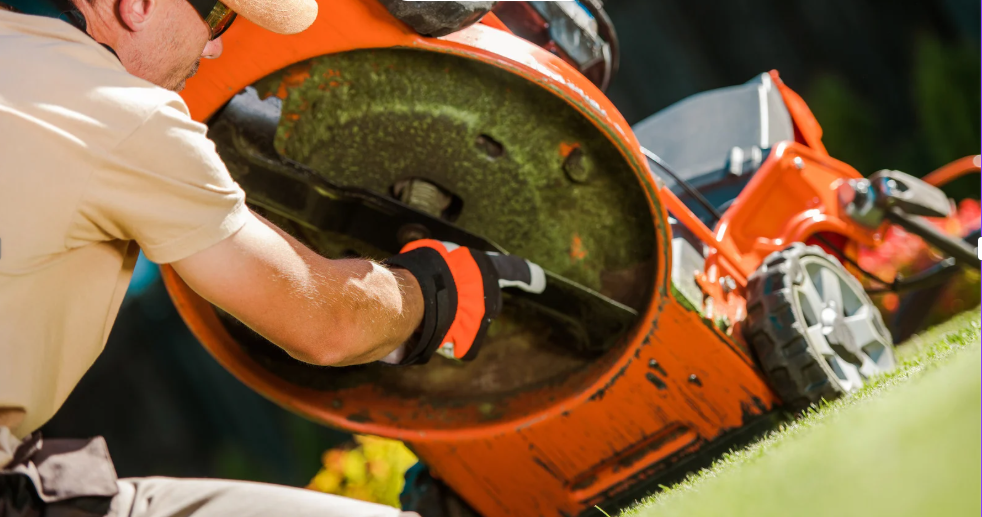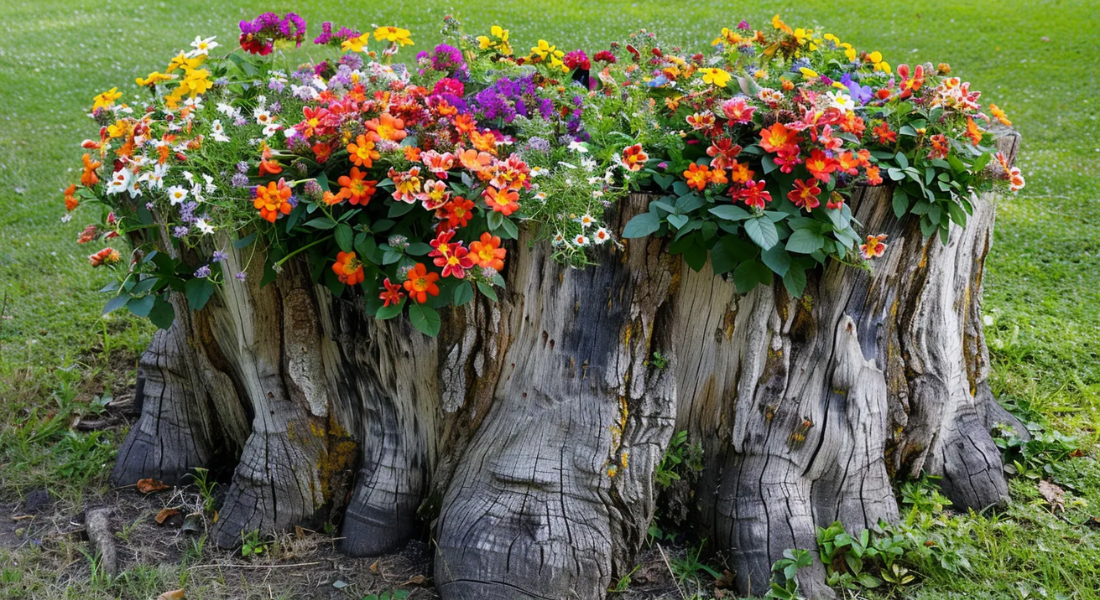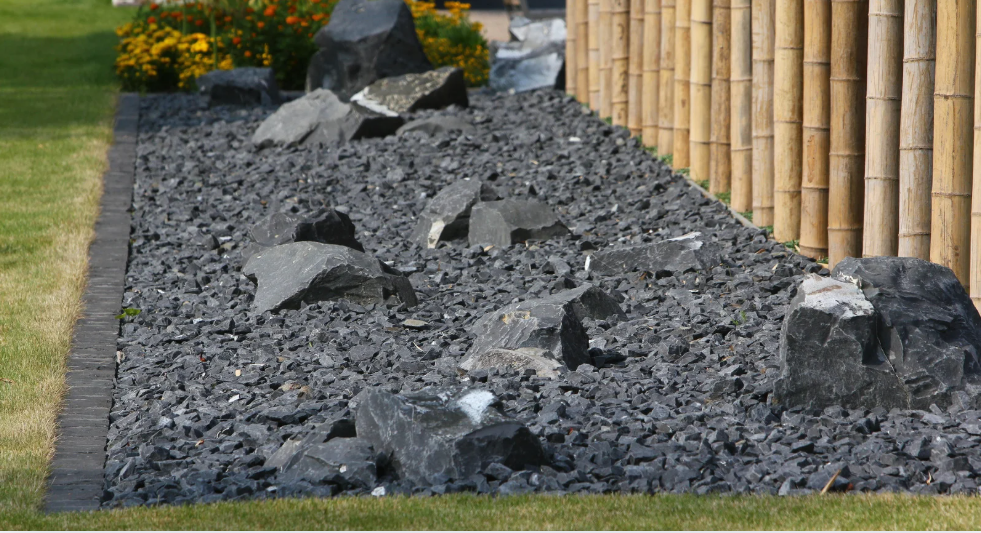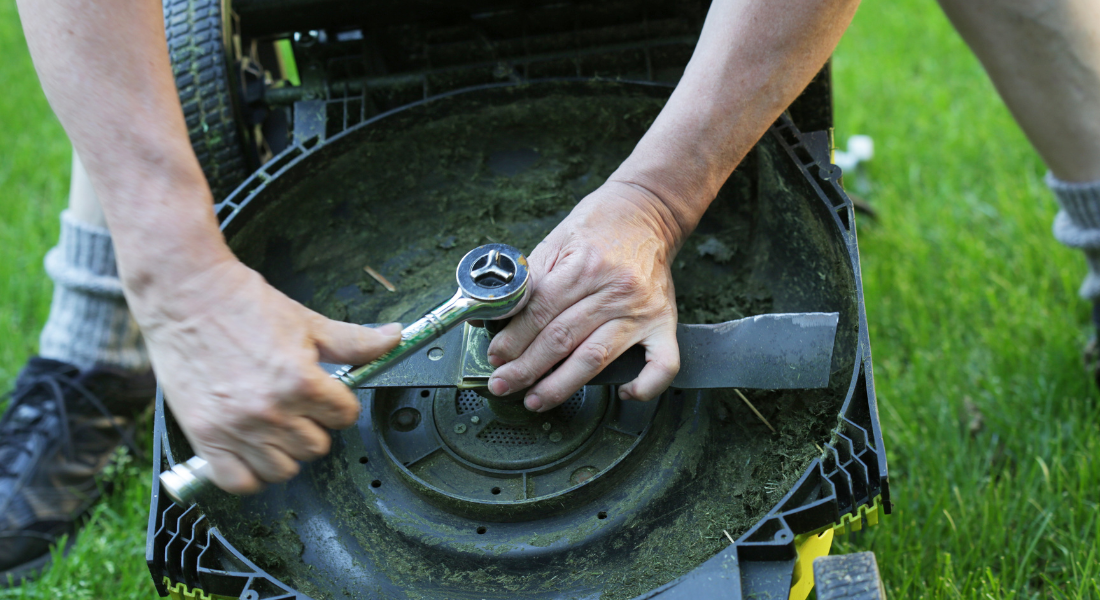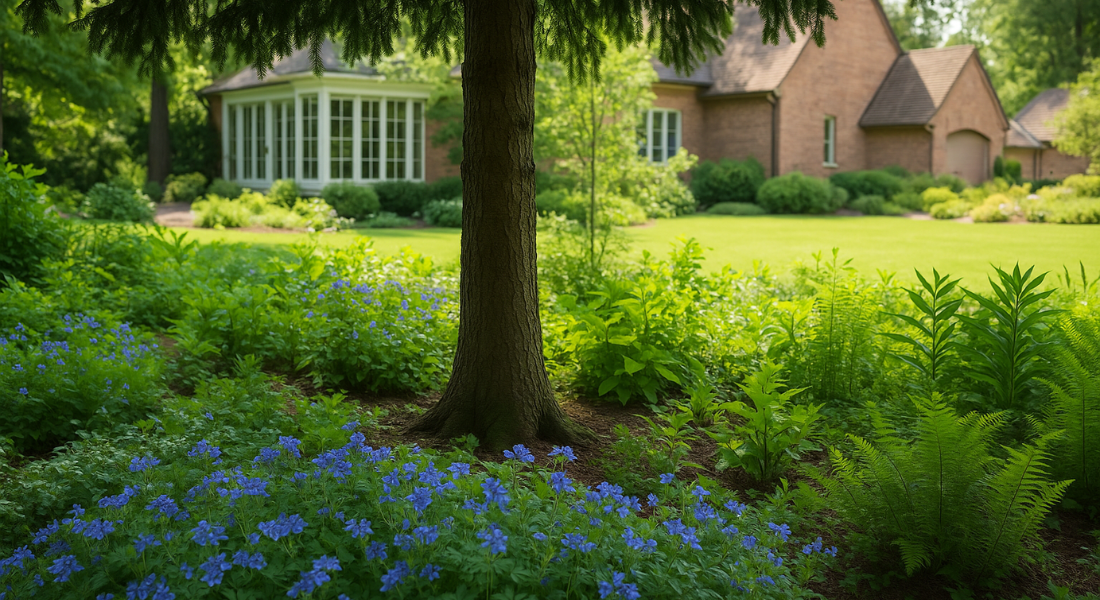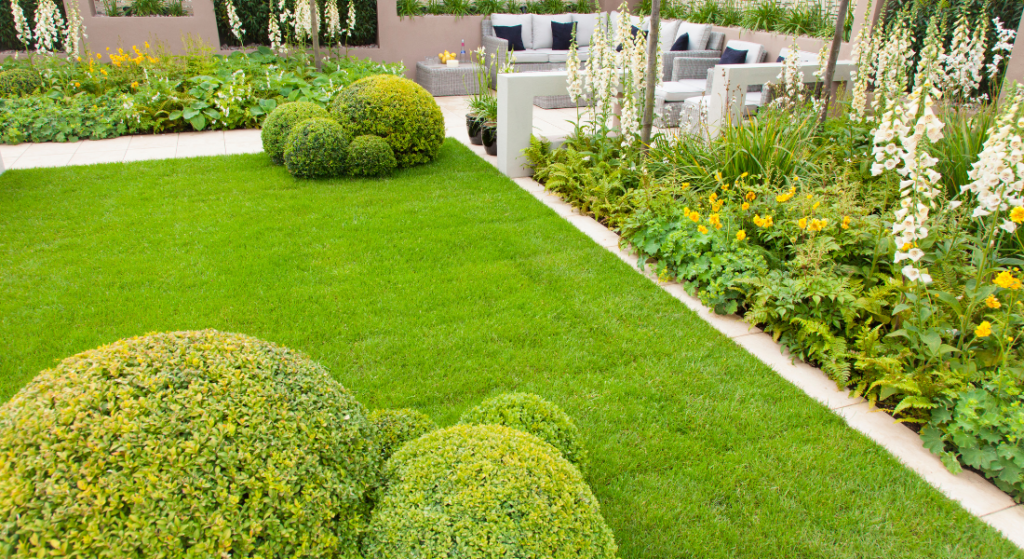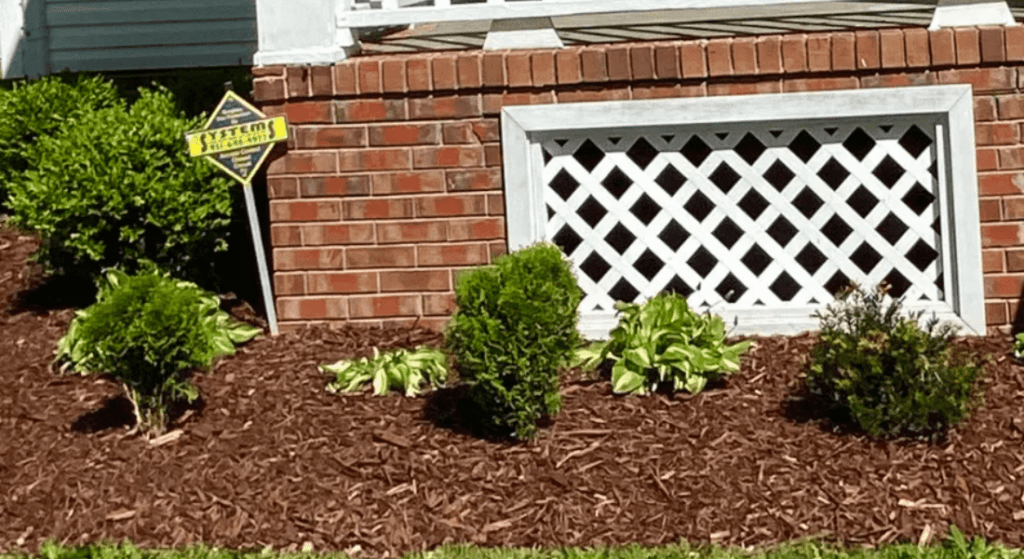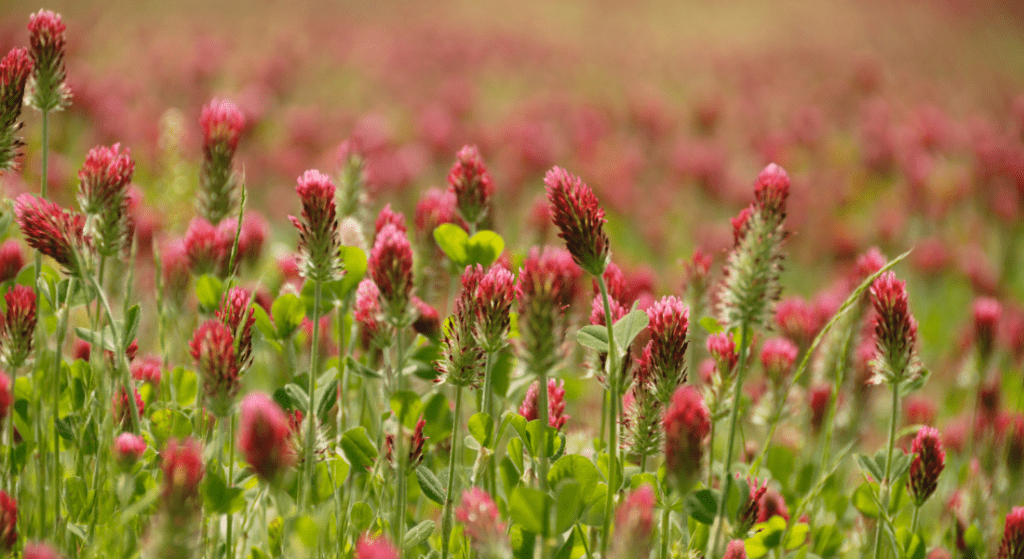The Ultimate Guide to Lawn Aeration in Clarksville, TN
Is your lawn looking a little patchy or struggling to thrive despite your best efforts? If you’re in Clarksville, TN, and want a healthier, greener lawn, lawn aeration might be just what you need.
In this blog, we’ll explore the what, when, and how lawn aeration can help your lawn. Let’s dive in!
What Is Lawn Aeration and How Does It Work?
Lawn aeration is the process of making small holes or slices in the soil to allow air, water, and nutrients to reach the grass roots more easily. This makes your grass healthier and stronger. You can aerate your lawn by using simple tools like a pitchfork, shoe spikes, or more advanced equipment.
Why Is Lawn Aeration Important?
Lawn aeration helps fix compacted soil, which makes it hard for air, water, and nutrients to reach the grass. When the soil is too compacted, plants can’t grow well.
Clarksville’s climate has hot summers and rainy seasons, which can cause soil to become compacted. By aerating, you allow moisture and air to reach deeper into the soil, helping the grass roots grow stronger and healthier. It also encourages microbes to break down the thatch layer, improving your lawn’s overall health.
What Are the Signs That Your Lawn Needs Aeration?
Wondering if your lawn needs aeration? There are a few telltale signs to look out for:
- Heavy Foot Traffic : If your yard is frequently walked on or used for outdoor activities, the soil can become compacted, leading to poor grass growth.
- Patchy or Bare Spots : If parts of your lawn aren’t growing as well as others or you notice thin, patchy areas, it might be due to compacted soil or poor nutrient absorption.
- Water Runoff : If water is pooling or running off your lawn instead of being absorbed into the soil, this could be a sign that the soil is compacted and needs aeration.
- Hard Soil : If the soil feels hard or dense when you push a screwdriver or a garden tool into the ground, it’s a good indicator that your lawn would benefit from aeration.
How Often Should You Aerate Your Lawn in Clarksville?
For most lawns in Clarksville, TN, aeration is recommended once a year. However, if your yard experiences heavy foot traffic or you notice compacted soil, you might need to aerate more frequently.
In Clarksville, the most effective times for lawn aeration are in the early spring or fall, depending on the type of grass you have. Aerating during these seasons will give your lawn the best results and help it recover quickly.
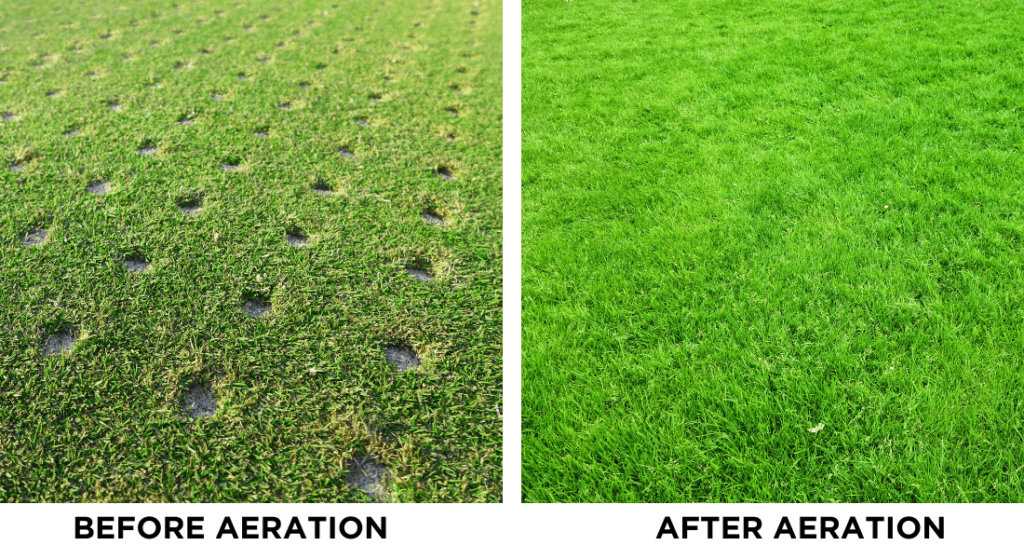
What Are the Benefits of Lawn Aeration?
Lawn aeration offers numerous benefits that go beyond just improving the look of your yard. Here’s how aeration can benefit your lawn:
- Improves Soil Health
- Help Deeper Root Growth
- Reduces Thatch Buildup
- Make your Lawn Thicker And Lusher
What Should You Expect After Aeration?
After aeration, your lawn might look a bit rough, with small plugs of soil scattered around. These plugs will naturally break down over time, enriching the soil. In a few weeks, you’ll notice your grass growing thicker and healthier thanks to the improved air and nutrient flow to the roots.
It’s important to keep watering your lawn regularly after aeration to help it recover and thrive. If you’ve over seeded as well, be sure to keep the soil moist to give the new grass seeds the best chance to grow strong.
Is Aeration and Overseeding Necessary?
If your lawn has bare spots or thinning grass, combining aeration and overseeding can work wonders. After aeration, the soil is perfectly prepared to receive new grass seed. Overseeding involves spreading grass seed over your existing lawn to help fill in thin areas and make the grass thicker.
Aeration and overseeding together create the best environment for new grass to grow, resulting in a fuller, healthier lawn. For optimal results, it’s recommended to overseed right after aeration. This gives the seeds a better chance to establish deep roots and grow into lush, strong grass.
Can I Aerate My Lawn on My Own?
Yes, you can aerate your lawn on your own, but hiring a professional like GreenLife Services in Clarksville, TN, can make the process easier and more effective. Aerating requires special equipment, and it can take time and effort to do it right. We have the tools and experience to assess your lawn and provide the best approach for aeration and overseeding.
By choosing a professional service, you’ll save time and get better, longer-lasting results. We also offer additional lawn care treatments like fertilization and weed control to keep your yard healthy and looking great. Contact us today to get a free quote for your lawn care!
Summary of Key Points:
- Lawn aeration is essential for relieving soil compaction and improving grass health.
- Aeration allows water, nutrients, and air to reach the grassroots , promoting deeper growth.
- Core aeration is the most effective method for reducing thatch and enhancing soil structure.
- Aeration and overseeding work together to create a thicker, more vibrant lawn.
- Signs your lawn needs aeration include heavy foot traffic, bare spots, and water runoff.
- For the best results, hire a professional service like Lawn Doctor of Clarksville-Nashville.
- You can request a free estimate for lawn aeration services to get started today.
Now you know about lawn aeration, but how about the best mowing schedule for your Clarksville lawn? Check out our blog for expert tips on how often to mow to keep your grass healthy and looking its best !
FAQs
Q. When should you aerate your lawn?
A. The best time to aerate your lawn depends on the type of grass you have. For cool-season grasses, such as Kentucky Bluegrass or fescue, aeration is best done in early spring or fall when the grass is actively growing. For warm-season grasses, like Bermuda or Zoysia, late spring or early summer is ideal. In general, aerating during the growing season gives your lawn the best chance to recover quickly and thrive.
Q. Does lawn aeration actually work?
A. Yes, lawn aeration is highly effective! It helps break up compacted soil, allowing water, air, and nutrients to reach the roots. This encourages deeper root growth and overall healthier grass. After aeration, your lawn becomes better equipped to absorb nutrients and retain moisture, which can lead to a thicker, greener, and more resilient yard.
Q. Is it better to plug or aerate your lawn?
A. “Plugging” or “core aeration” is typically more effective than simple aeration methods like spiking. Core aeration removes small plugs of soil from the ground, reducing compaction more effectively and improving soil health. This method allows for better water and nutrient absorption, leading to stronger grass roots and a healthier lawn overall.
Q. How do I aerate my lawn myself?
A. To aerate your lawn yourself, you’ll need to rent or purchase a core aerator, which is more efficient than using manual tools like spike shoes or a spading fork. First, water your lawn a day or two before aerating to soften the soil. Then, run the aerator over your yard, making multiple passes in areas with compacted soil or heavy traffic. Once done, leave the soil plugs on the lawn, as they’ll break down and provide nutrients. Keep watering your lawn after aeration to help it recover and encourage growth.
